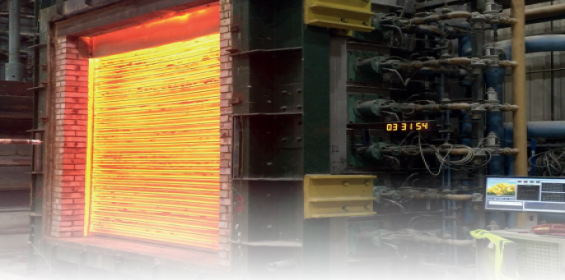Understanding fire doors and shutter safety regulations
Published: 01 July, 2021
Melanie Rosby* examines the regulations and requirements around fire doors and shutter safety so you can make sure your building is safe.
It has been almost three years since the devastating Grenfell Tower fire, which killed 72 people and injured more than 70 on June 14, 2017. An independent review has since identified several fundamental fire safety issues and various regulations have been updated or improved.
Regulations relating to fire doors and shutters specifically have also been improved in recent years, and greater emphasis has been placed on existing requirements and regulations as well. It’s essential these are closely adhered to in order to avoid further disasters and loss of life. Here, we help you understand the regulations and requirements around fire safety shutters so you can make sure your building is safe.
What are the Regulations you need to know about relating to fire shutters?
1. Machinery Directive. Since 1995, CE marking of powered doors (including fire and smoke resisting doors) has been mandatory under the Machinery Directive. All powered doors must be supplied with a declaration of conformity, plus an operation and maintenance manual.
2. CE marking. This type of marking shows that a manufacturer or importer conforms with European health, safety and environmental standards. CE marking of powered doors has been mandatory since 1995, however there are now additional requirements as well. From 2019, new fire and smoke resisting doors covered by EN 13241 and EN 16034:2014 must be CE marked for essential characteristics, in addition to the CE marking of powered doors.
3. Construction Products Regulation. The Construction Products Regulation (CPR) sets out rules for the marketing of construction products in the EU, ensuring information is reliable. This is available to professionals, public authorities and consumers. There are also significant additional requirements for CE marking of powered and manual fire/smoke resisting doors covered by EN 13241:2003+A2:2016 in order to comply with the CPR.
System requirements for fire shutters
1. Design and suitability of the system. Fire shutters must meet the requirements of any appropriate fire test standards and local building regulations. The type of building, location of the doors and the use of the building all need to be considered.
2. Smoke and fire resistance. Risk assessments for the building will dictate how long the door needs to be able to resist the spread of fire and/or smoke. Fire doors generally need to be self-closing to meet requirements and should be kept closed in most situations. To put it more specifically, self-closing means the door must be able to close from any angle or position within its closing range. Correct installation is an essential part of achieving satisfactory smoke and fire resistance. Manufacturers must supply a comprehensive installation manual (if the door is being installed by another party) and a full operation manual for the client.
3. Cascaded test evidence. Previously, testing data could be cascaded by other manufacturers and collective bodies. Now, test evidence must be verified by a notified product certification body to avoid the issue of incorrect or incomplete data.
4. Declaration of performance (DoP). The company or person responsible for compliance must draw up and issue a DoP, which should detail all applicable essential characteristics and state the notified test laboratory used. The DoP must list all essential characteristics covered by EN 13241 and EN 16034:2014 in a single document.
It is also worth noting that all fire and smoke resistance essential characteristics must be verified under system 1, meaning that the microenterprise test evidence relaxations allowed by article 37 are not permitted here.
We know some of these fire door and shutter regulations and requirements can be complicated to understand, but they are all essential to ensure products do the jobs they are designed to do, and to avoid further disasters like the Grenfell Tower fire. As a consumer, the main takeaway is that products are better regulated and there are stricter fire safety requirements in place to protect you, which is positive progress.
*Melanie Rosby is marketing manager for Hart Door Systems For further information please visit: https://www.hartdoors.com/
https://www.linkedin.com/company/hartdoors/
https://www.facebook.com/HartDoors/






 PYROBAN reports that the emissions regulations (EU 97/68/EC Directive) have been amended to support the special application of diesel engines, such as those in forklifts, used in potentially explosive atmospheres, where safety is paramount.
PYROBAN reports that the emissions regulations (EU 97/68/EC Directive) have been amended to support the special application of diesel engines, such as those in forklifts, used in potentially explosive atmospheres, where safety is paramount.
